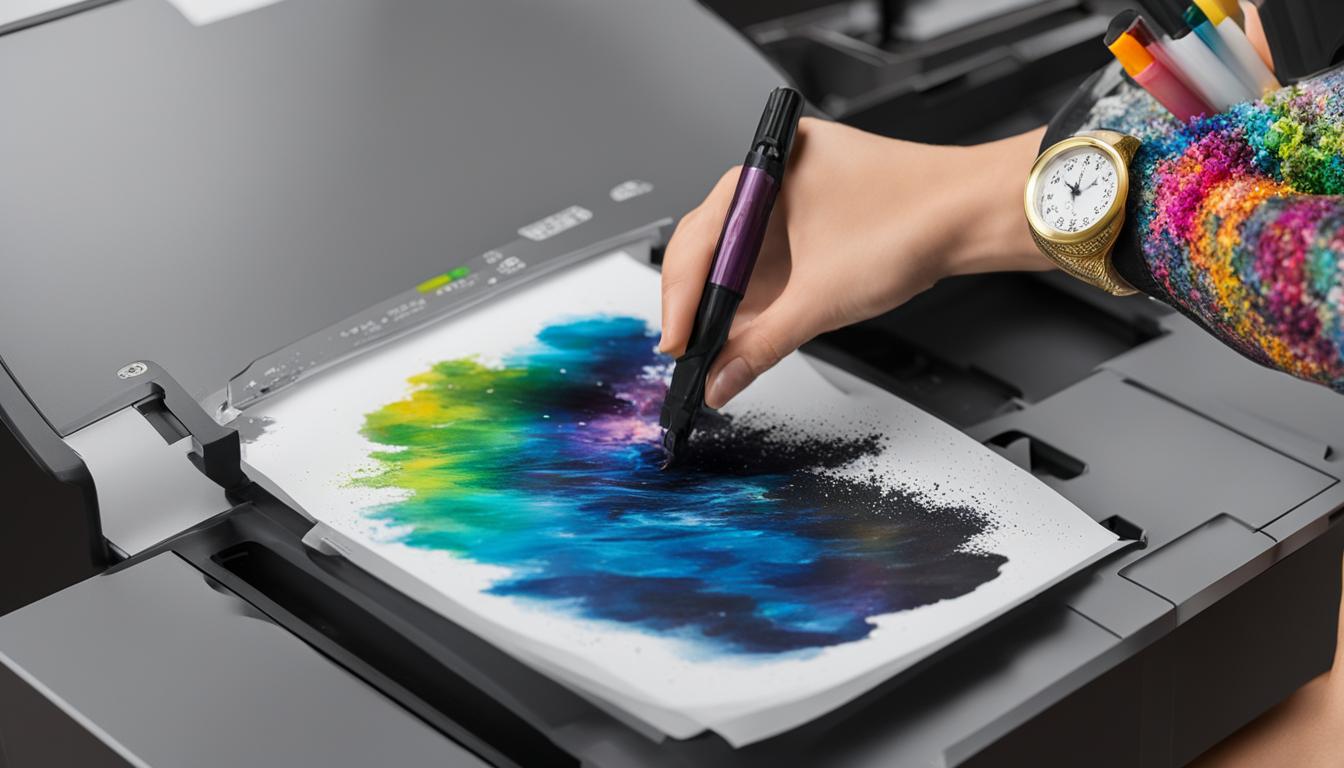As a printer owner, one of your primary concerns is the longevity of your ink tank cartridges. Tank ink longevity is critical because it translates into cost savings, higher productivity, and an overall better printing experience. Understanding the lifespan of tank ink is the first step in optimizing your printer’s efficiency and performance.
In this section, we will dive deep into the topic of ink tank lifespan and explore how to maximize printer efficiency to extend the life of your ink tanks. We will also touch on ink tank cartridges’ basics, factors influencing the longevity of tank ink, and how to manage ink tank maintenance effectively.
Key Takeaways:
- Understanding ink tank lifespan is crucial to optimizing printer efficiency and reducing costs.
- The lifespan of tank ink depends on several factors, including ink usage, print frequency, and environment.
- To maximize ink tank longevity, ink-saving techniques such as draft mode and double-sided printing can be employed.
- Proper maintenance and storage practices are essential for ensuring optimal ink tank performance.
- Recognizing the signs of low ink levels and replacing ink cartridges when needed can prevent interruptions in your printing tasks.
Understanding Ink Tank Cartridges
When it comes to printer ink, understanding ink tank cartridges is crucial. Ink tank cartridges are designed to work with specific printers and are responsible for supplying ink to the printer. They come with a built-in reservoir that holds a large amount of ink, which means you can print for longer before needing to replace the cartridge. This not only saves you money, but it also reduces the frequency with which you’ll need to change cartridges.
Ink tank cartridges also come in different sizes and ink capacity depending on the printer model, and the amount of ink they can store varies accordingly. Before buying a printer, it’s essential to check the ink capacity of its cartridges, especially if you plan on printing frequently.
Printer ink is supplied from ink tank cartridges to the printhead of your printer. It’s then sprayed onto paper to create text and images, making ink tank cartridges an essential component for the functionality of your printer. Regular printer maintenance is vital to keep the ink supply system working efficiently, as dust and other debris can accumulate over time.
The Importance of Regular Printer Maintenance
Proper maintenance of your printer and ink tank cartridges is crucial to ensure their longevity. Regularly cleaning your printhead and ensuring compatible ink is used can help you avoid ink blockages and ink flow problems that may impact the amount of ink consumed. Moreover, firmware updates regularly provided by your printer’s manufacturer and proper storage conditions, such as avoiding extreme temperatures and direct sunlight, can prolong the lifespan of your ink tank cartridges.
Factors Affecting Tank Ink Lifespan
While ink tank cartridges are designed to provide a longer life than traditional ink cartridges, several factors can affect how long they last. Understanding these factors can help you optimize your printing practices and ensure you get the most out of your ink tanks.
Ink Usage Patterns
The amount of ink you use will ultimately impact how long your ink tanks last. Printing high-quality documents or photos can consume more ink than basic prints. Similarly, frequent printing will decrease the lifespan of your ink tanks compared to infrequent use. To extend the lifespan of your ink tanks, consider reducing your ink usage by printing in draft mode, which uses less ink, or by regularly monitoring your ink levels to avoid overprinting.
Print Frequency and Settings
Print frequency and settings can also impact the longevity of your ink tanks. Overusing your printer or printing at a high frequency can decrease the lifespan of your ink tanks. Additionally, using high-quality print settings such as color and paper type, or printing double-sided, can consume more ink and decrease tank ink longevity. To extend the lifespan of your ink tanks, consider print settings such as grayscale or double-sided printing to conserve ink usage.
Ink Types
The type of ink you use in your printer can also impact the lifespan of your ink tanks. Different ink types have varying chemical compositions, which can affect their resistance to fading, smudging, and drying out. When choosing ink for your printer, consider the properties of the ink and whether it aligns with your printing needs. Using high-quality ink designed for your printer can help extend the lifespan of your ink tanks.
| Types of Ink | Properties |
|---|---|
| Dye Ink | Produces vibrant colors, but less resistant to fading and water damage |
| Pigment Ink | Produces colors with a more subdued appearance, but more resistant to fading and water damage |

Environmental Conditions
The environmental conditions surrounding your printer can also impact the lifespan of your ink tanks. Exposure to high temperatures, humidity, or sunlight can accelerate the drying and clogging of ink nozzles, reducing ink flow and tank longevity. Consider storing your printer and ink tanks in a cool, dry, and dark place to prevent ink dry out and maintain optimal performance.
Determining Ink Consumption
Monitoring your ink consumption is essential to manage your ink usage and extend the lifespan of your tank ink. There are several ways you can monitor your ink levels. Most printers come with built-in ink level monitoring, so you can keep an eye on your ink supply. Alternatively, you can use third-party ink level monitoring software.
The impact of print quality on ink consumption is undeniable. Lower quality prints can use significantly less ink than higher quality prints. If you only need prints for internal use, use draft mode or lower quality print settings to minimize ink usage.
- Choose “Draft Mode” or “Fast” to lower print quality and reduce ink consumption.
- Use grayscale printing for documents that don’t require color.
- Double-sided printing can cut down on paper usage and ink consumption.
Print coverage, or the amount of ink used to cover a surface, can significantly impact ink consumption. Lowering print coverage can reduce ink usage and extend the life of your tank ink. Consider font size, line spacing, and margins when adjusting print coverage.
Did you know? The PrecisionCore technology used in some Epson printers reduces ink consumption up to 50% compared to traditional inkjet printers.
Prolonging Tank Ink Lifespan
Maximizing the lifespan of your tank ink cartridges not only saves you money in the long run but also reduces environmental waste. Here are some ink-saving techniques you can utilize:
Draft Mode Printing
Draft mode printing is an excellent way to save ink as it uses less ink to print documents. However, keep in mind that the print quality may not be up to your standards if you prioritize ink savings over quality.
Grayscale Printing
Printing in grayscale instead of color also helps conserve ink as colored ink tends to run out faster than black ink. Only use color when necessary, and stick to grayscale prints for everyday documents.
Double-Sided Printing
Printing on both sides of the page minimizes paper usage and ink consumption. This technique can potentially double the lifespan of your tank ink while also saving money on paper expenses.
Implementing these ink-saving techniques can significantly extend the longevity of your tank ink.
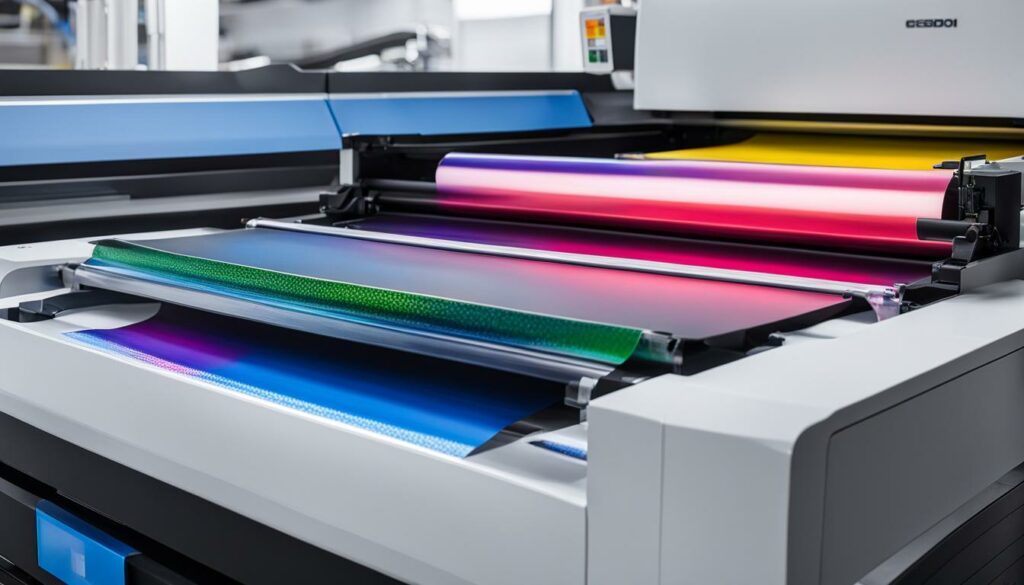
Managing Ink Tank Maintenance
Proper maintenance of your ink tank cartridges is crucial for maximizing their lifespan. Neglecting ink tank maintenance can lead to clogs, poor print quality, and a shorter lifespan for your cartridges. Here are some essential tasks to perform to keep your ink tanks in top shape:
Printhead Cleaning
Over time, printheads can become clogged with dried ink, leading to decreased print quality and potential damage to your printer. Regular printhead cleaning can prevent these issues and keep your printer running smoothly.
To clean your printhead, navigate to your printer settings and select the option for printhead cleaning. This will initiate a cleaning cycle that will help remove any clogs or obstructions.
Firmware Updates
Regular firmware updates can help improve the performance of your printer and ensure that it’s functioning optimally. Firmware updates can also fix any bugs or issues that may be impacting your printer’s performance.
To check for firmware updates, visit the website of your printer’s manufacturer and download any available updates. Make sure to follow the instructions carefully to avoid any potential issues with the update process.
Storage Recommendations
Proper storage of your ink tank cartridges can also help prolong their lifespan. Make sure to store your cartridges in a cool, dry place, away from direct sunlight and extreme temperatures. Avoid leaving your ink tanks in your printer for extended periods of time, as this can dry out the ink and lead to clogs.
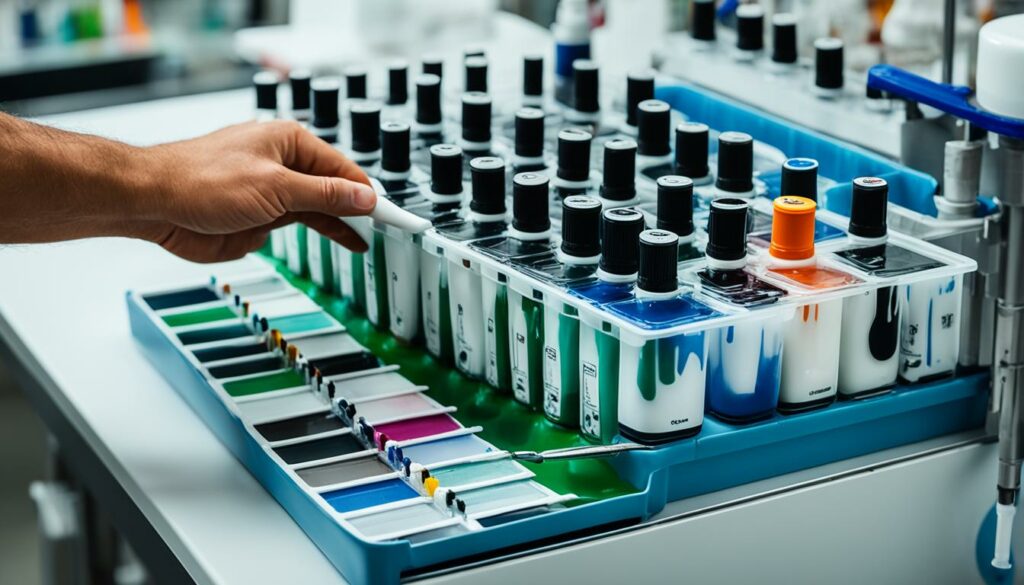
Regular maintenance of your ink tank cartridges can help ensure optimal performance and longevity. By performing printhead cleaning, regularly updating firmware, and following proper storage recommendations, you can help extend the lifespan of your ink tank cartridges and minimize the need for replacements.
Signs of Low Ink Levels
Running out of ink in the middle of an important print job can be frustrating. To prevent this, it’s important to recognize the signals that indicate low ink levels. These can include:
“Low ink” or “ink out” messages on your printer or computer screen
Faded or streaky printouts
Blank pages or missing text
Noise from the printer that signals ink is running low
When you start to see these signs, it’s time to consider replacing your ink cartridges. This will help you avoid interruptions in your printing tasks and ensure that your printer functions smoothly.
Many printers come with low ink alerts, ink warnings, and printer notifications that can help you keep track of your ink levels. These notifications can be in the form of pop-up messages on your computer screen or images on your printer’s display screen that show the ink levels of each cartridge.
When replacing ink cartridges, it’s crucial to select the right type of ink that matches your printer’s specifications. Using an incorrect type of ink can cause damage to your printer and affect print quality. Follow the manufacturer’s instructions to replace your ink cartridges and recycle the used ones properly.
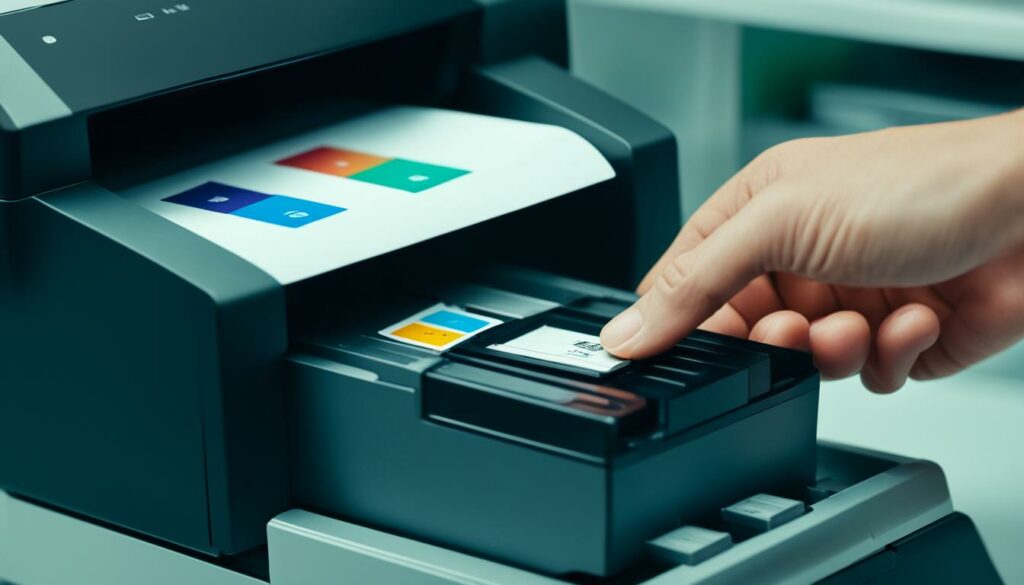
Replacing ink cartridges is a simple process that can significantly improve your printer’s efficiency and ensure high-quality prints. By understanding the signs of low ink levels and paying attention to printer notifications, you can avoid disruptions in your work and prolong the lifespan of your ink tanks.
Tips for Maximizing Printer Efficiency
Efficient printer usage leads to an extended tank ink lifespan while reducing overall operational costs. Here are some effective tips for maximizing your printer efficiency:
Routine Print Maintenance
Regular maintenance of your printer ensures optimal performance and reduces ink wastage. Clean your printer heads periodically, according to the manufacturer’s instructions. Replace old or damaged cartridges and ensure that your printer is always in good condition to prevent mechanical issues that can lead to ink wastage and print quality issues.
Utilize Energy-Saving Features
Most printers come equipped with energy-saving features such as auto-sleep modes and low-power standby modes that help reduce energy consumption. These features not only save costs but also reduce the environmental impact of printer operations.
Software Optimization
Software optimization helps reduce ink usage by allowing you to select draft mode printing, lower resolution settings, and grayscale printing options. Additionally, you can minimize ink usage by selectively printing only the necessary pages, reducing ink consumption, and improving printer efficiency.
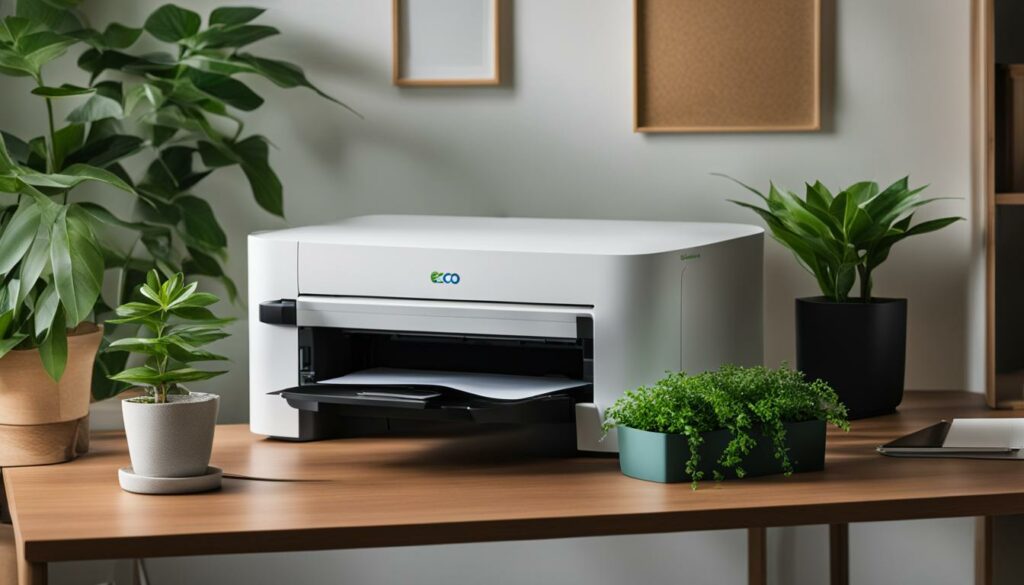
Consider Managed Print Services
Managed print services offer a comprehensive way to manage printer usage efficiently. They provide remote monitoring and management of your printer fleet, automatic ink cartridge supply replacement, and printer usage analytics to help optimize your printer usage. This can help to identify inefficiencies and reduce ink usage, leading to cost savings.
By observing these tips, you can conserve ink, optimize printer performance, and extend the lifespan of your ink tank cartridges.
Extending Ink Tank Longevity
Properly maintaining and utilizing your ink tank cartridges can significantly extend their lifespan. Here are some additional strategies to help you get the most out of your tank ink:
Ink Conservation Techniques
To minimize ink usage and prolong the life of your ink tanks, consider utilizing ink conservation techniques such as:
- Adjusting print settings to lower ink usage, such as choosing grayscale printing or reducing color saturation
- Printing only what is necessary and avoiding unnecessary printing
- Regularly cleaning printheads to reduce ink waste
Proper Storage Practices
Proper storage can prevent ink from drying out or becoming contaminated, helping to extend the life of your ink tanks. Here are some tips to keep in mind:
- Always store ink tanks in their original packaging until they are ready to be used
- Keep ink tanks in a cool, dry place away from direct sunlight, heat sources, or humidity
- Ensure ink tanks are stored upright to prevent leaks or clogs

The Importance of Climate Control
The climate in which your printing equipment is stored and used can impact the lifespan of your ink tanks. It’s important to maintain a consistent climate, avoiding extreme temperatures or humidity levels that can cause damage to your printer or ink. Consider using a dehumidifier or air conditioner to regulate the environment in which your ink tanks are used and stored.
Considerations for Printer Usage
Your printer’s usage patterns and frequency can also impact the longevity of your ink tanks. Here are some tips to keep in mind:
- Turn off your printer when not in use to prevent unnecessary ink usage and printhead wear
- Avoid letting your printer sit idle for extended periods, as this can cause ink to dry out and clog printheads
- Keep your printer regularly maintained and up-to-date with firmware updates
By implementing these additional strategies for ink tank maintenance, storage, and printer usage, you can help extend the lifespan of your ink tanks and make the most out of every cartridge.
Conclusion
Properly understanding the lifespan of your ink tank cartridges is crucial for ensuring printer efficiency and minimizing ink consumption. By implementing regular printer maintenance, utilizing ink-saving techniques, and understanding the factors that affect ink tank longevity, you can extend the life of your tank ink and reduce costs over time.
Remember to monitor ink consumption rates, recognize the signs of low ink levels, and employ ink conservation techniques to optimize printer efficiency. Additionally, proper ink tank maintenance, including printhead cleaning, firmware updates, and following storage recommendations, can help ensure optimal performance and longevity.
By following these guidelines, you can make the most out of your ink tank cartridges and enjoy high-quality prints for longer periods, reducing the need for frequent ink cartridge replacements and saving you money in the long run.

Morgan Azhari, the owner of PrinterUpdate.net, is a dedicated expert in the field of printers, leveraging a wealth of experience and education to create a platform that passionately shares insights and solutions.
With a goal to enhance the printer user experience, my vision for the website is to provide valuable content, making a positive impact on individuals navigating the complexities of printers.
